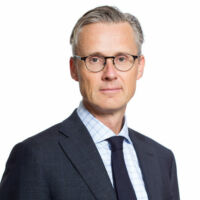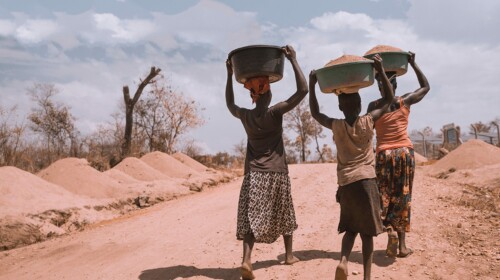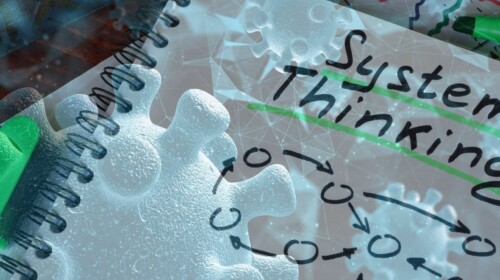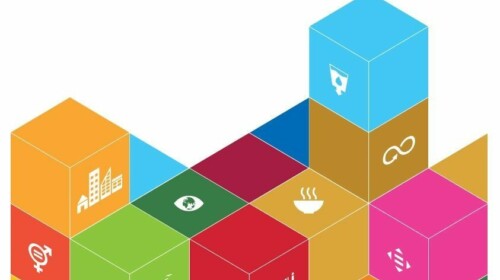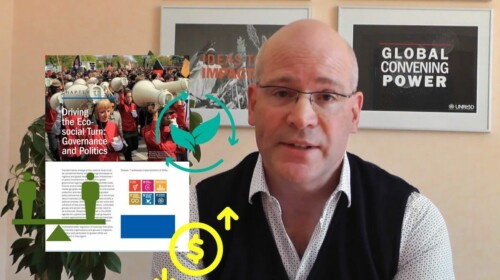It is by now widely recognized that the SDGs came with a strong imperative for integrated decision making and coherence. Looking for example at the VNRs (Voluntary National Reviews) reported to the High-level Political Forum, each year the issue of institutional integration and coherence gets more and more attention. The most common way of approaching this, is to understand and tweak the central government machinery to become better integrated and conducive to knowledge-sharing and coordination between its various parts. This institutional integration process provides the basis for allowing a fuller picture of the whole landscape of priorities, goals, and ambitions, as well as enabling a balancing of policies to drive progress towards sustainable development.
Case in point – this UN strategy note I helped prepare a few months ago, which presents some key organizational options and approaches for governments to promote coherent policy making.
This, we believe, will lead to better, more coherent policies and plans, where governments take a systems perspective, where interactions between the different SDGs are at the very least informing different sectoral decisions, and where one might even hope for a joined-up perspective on government priorities shared by all departments.
COVID responses illustrate the classic problem of policy coherence, which can be detected in how widely different national strategies and responses have been. The differences in response will no doubt be the subject of many future political science dissertations. Many countries opted for very harsh measures of lock down, curfew and school closures to contain the infection spread, some in combination with individual tracking and tracing via mobile phone apps. Others opted for more voluntary restrictions, offering “recommendations” and only late in the day started to close down schools. Arguments have been made for a comprehensive perspective on pandemic response so that the cure is not worse than the disease – which is perhaps difficult to imagine as we approach 4 million deaths with COVID-19. Do you take a narrow “sectoral” view on disease control, or do you take a broader public health perspective, including how people are affected by restrictions in their lives, losing jobs, or being locked in their apartments? Or do you take an even wider perspective, factoring in also how the economy or the environment are affected?
Each approach comes with pros and cons, that are so profound and alarming, that it feels almost unethical to write about them – especially as we are still to fully uncover the long-term effects of the pandemic worldwide. Should we be weighing up avoided COVID deaths against cases of depression, isolation and maybe suicides due to lock down? Or against a “lost generation” of children that has been denied effective education for over a year? And what about against the many millions of people who now must find a way to dig themselves out of a new state of poverty?
What has determined or prompted the differential pandemic responses? Here, new political science research will be needed, testing different hypotheses. Explanations will have to be sought, for instance, in the institutional arrangements for public health and disease prevention; in the distribution of roles and mandates for crisis response and government action; in the roles of local, regional and national state actors and private firms in health care; but also, in a widespread political and societal culture of acceptance for strong state control and bans, versus respect for individual rights, freedoms, and integrity. Human rights and freedoms are often taken for granted in those parts of the world where we have them today, but history tells us that they have been hard earned and can be relatively easily lost.
COVID recovery is equally pertinent as a problem of policy coherence – for example building back as quickly as possible, versus building back greener and better? The latter will likely be causing delays, transition costs, and possibly even job losses in the short term, but teeing up the economy for a transformative change, in line with the ambitions of the 2030 Agenda, with better jobs and more equal economic outcomes. This is of crucial importance, as the human, social, financial, and economic consequences of this crisis across the world have effectively compromised our ability to achieve the SDGs.
Having worked on problems of coherence, policy effectiveness and sustainability for nearly three decades now, I believe in taking the broader view. I believe in the need to make some hard choices based on comprehensive information of potential impacts across society. This is ultimately what the center of government must do, and will do, anyway. Hopefully intently and not by consequence of its decisions.
However, the institutional barriers against doing this in a systematic way are massive. Coherence comes with real transaction costs and immediate trade-offs: competing resource demands, a longer execution (getting people together and thinking jointly takes time); and leading to potentially unclear accountability relations. Coherence also goes against our nature as herd creatures, our deeply rooted specialization logic in modern work life, as well as rules -formal and informal-, and standard operating procedure which have been in place for decades.
Having said that, coherence is not by any means an impossible objective and we should not give up on coherent policy making as “the holy grail” for governments. But given the barriers, we do need to perhaps have realistic expectations about how far it can go at the level of central government, and, crucially, think harder about what integration and coherence can be achieved “down-stream” i.e., where the rubber hits the road in terms of implementation, plans, actions, and investment. The current pandemic is again a case in point, as it has so forcefully brought local actors – such as local and regional governments, civil servants, health staff, NGOs, and communities in general – to the forefront in that these actors have had to respond rapidly to fast-changing realities and emergencies, all while ensuring the safety and protection of people, especially the most vulnerable ones.
The question then is, what does coherence mean for actors beyond national governments, and how can they adopt coherence as a principle and approach in their strategies and actions? This will be, in my view, the make-or-break issue for SDG implementation. For this reason, I leave here the following invitations and ideas for the different actor groups to join the debate around coherent policies, plans and practices in pursuing the 2030 Agenda.
For fellow researchers
We, as research communities, will have to study and understand better the ramifications on sustainable development overall of different pandemic responses around the world. We must not only help understand the effects of what has happened but also do our homework in designing and proposing integrated and coherent recovery paths – and be vocal about them. We must make sure those who make the decisions in your context, hear the options we come up with. For example, we should invest to generate the evidence that is needed for carrying out comprehensive impact assessments across the 17 SDGs in different countries.
For associations and networks
You have a key role to play as governments increasingly have to ensure that different voices are being heard and work with all relevant actors to identify challenges, set priorities, align actions, and mobilize resources. As associations, you have the opportunity to represent the interests and priorities of your constituencies (e.g., women and youth). But you also have a role to support and embody coherence, which implies going beyond thinking about what other sectors and decisions have as impacts on you, but also to consider how your priorities and request affect other groups and interests. Does your agenda generate synergies with other development objectives, and how can they be leveraged further? Are there any trade-offs, and how can they be minimized? This -inward and outward- view can be an effective input to policy making and help governments make more coherent decisions.
For the business and financial sector
Although traditional public financing approaches, such as ODA and domestic resource mobilization remain essential, a vast amount of additional financing is needed to deliver the 2030 Agenda. Importantly, this makes the 2030 Agenda also a global investment opportunity. The world will be halfway through the 2030 Agenda timeline next year, and with the pandemic driving vulnerable groups into poverty, political pressure will increase to achieve the goals. Businesses and investors: you can help accelerate SDGs implementation, by coupling your leverage capacity with systemic and cross-cutting 2030 Agenda alignment in business practices, planning and investments. For example, you can use SDG synergies thinking to develop strategic priorities; to test strategies and investments, not just to check against the SDGs but also to analyze and plan for the systemic effects; as well as to monitor the systemic impact of your activities.
For regional and local governments
The local level gives a more concrete and place-based understanding of what the SDGs mean in practice, and how they interact, which makes the whole 2030 Agenda and the question of coherence come to life. And it is at this level that the state’s service delivery on 2030 Agenda priorities like housing, education, health care and environmental protection is actually meeting the citizens. Raising awareness and putting such systems understanding into practice does not require setting up a new organization. Local and regional leaders can play a key role by agreeing on priorities considering synergies and trade-offs between sectors in your area of jurisdiction, and between cross-cutting issues in multiple sectors. Many methods and tools are increasingly becoming available to assist you in this task. Likewise, in terms of creating opportunities, look for spaces in national decision-making but also international debates. Make yourselves noticed in gatherings where governments, development organizations and foundations come together in search for promising ideas, which can direct more resources to the local level. For example, the Local and Regional Governments Forum, a Special Event of the UN High Level Political Forum (HLPF) which illustrates the importance of localizing action towards the achievement of the SDGs and how partnerships are crucial in this regard. Another example is the SDG Investment Fair, which supports direct informal interaction among representatives of governments of developing countries, the private sector, and financial intermediaries with a view of accelerating the mobilization of investment for the SDGs.
As we slowly move towards a post-COVID world, policy coherence will be essential to supporting a transition towards sustainable development. A future of more coherent policy making, where social and economic objectives and long-term sustainability and resilience goals are balanced, is not only up to national governments, but a multistakeholder game. We all have a role to play.
* Måns Nilsson is the Executive Director of SEI. He is also part time Professor of the Practice of Environmental Strategies and Policy Analysis at the Royal Institute of Technology (KTH). He received his MSc in International Economics from University of Lund, Sweden, and his PhD degree in Policy Analysis from Delft University of Technology, Netherlands.

